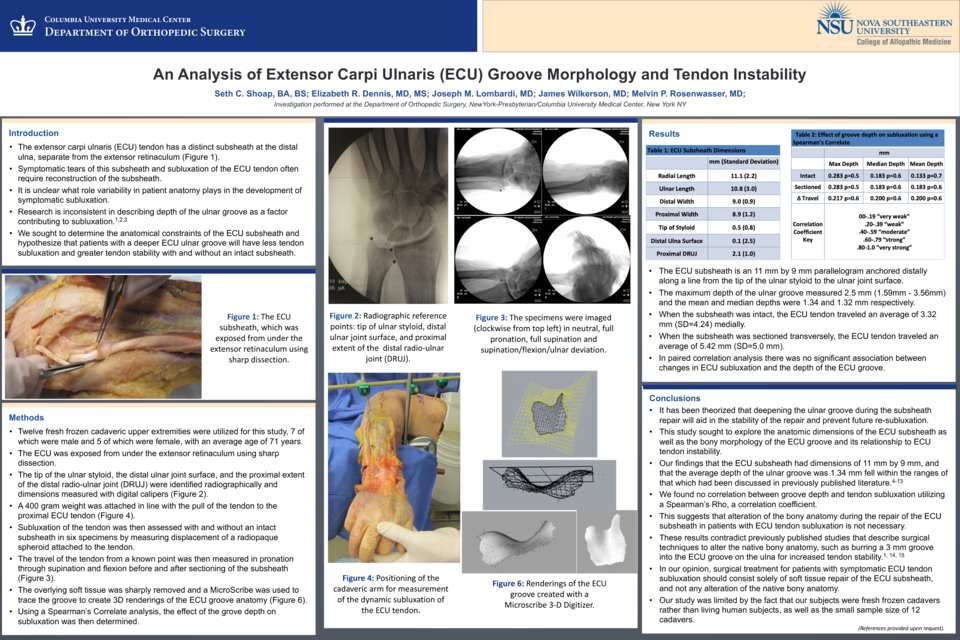Abstract
Hypothesis
The extensor carpi ulnaris (ECU) tendon has a distinct subsheath at the distal ulna, separate from the extensor retinaculum. Symptomatic tears of this subsheath and subluxation of the ECU tendon often require reconstruction of the subsheath. We sought to determine the anatomical constraints of the ECU subsheath and hypothesize that patients with a deeper ECU ulnar groove will have less tendon subluxation and greater tendon stability with and without an intact subsheath.
Introduction
Twelve fresh-frozen upper extremities were obtained. The ECU subsheath was exposed.The tip of the ulnar styloid, the distal ulnar joint surface, and the proximal extent of the distal radio-ulnar joint (DRUJ) were identified radiographically and dimensions measured with digital calipers. Subluxation of the tendon was then assessed with and without an intact subsheath in six specimens. The travel of the tendon from a known point was measured in pronation through supination and flexion before and after sectioning of the subsheath.
Results
The ECU subsheath is 8.9 mm (SD=0.8 mm) wide proximally and 9.0 mm (SD=1.2 mm) distally. The radial border is 11.3 mm (SD=2.8 mm) and ulnar border is 11.0 mm (SD=3.0 mm). The distal ulnar insertion is 0.5 mm (SD=0.8 mm) proximal to the tip of the styloid, and stretches 10.2 mm (SD=2.7 mm) proximally. From maximum pronation to maximum supination and flexion the ECU tendon traveled 3.32 mm (SD=4.24) medially when the subsheath was intact and 5.42 mm (SD=5.0 mm) after sectioning. The maximum depth of the ulnar groove was 2.5 mm (1.59mm - 3.56mm). There was no significant association between changes in ECU subluxation and the depth of the ECU groove (Spearman's rho 0.25, p=0.6).
Discussion
The ECU subsheath is roughly 1 cm square stretching proximally from the ulnar styloid. ECU groove depth is not a significant independent predictor of tendon subluxation.






